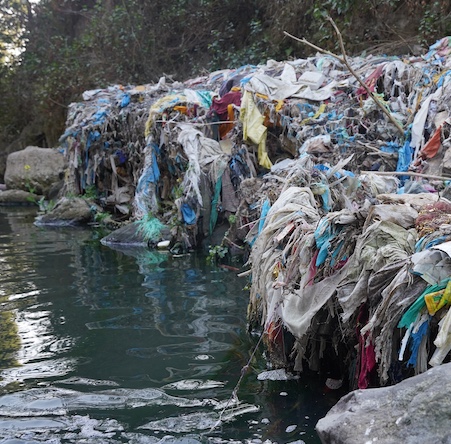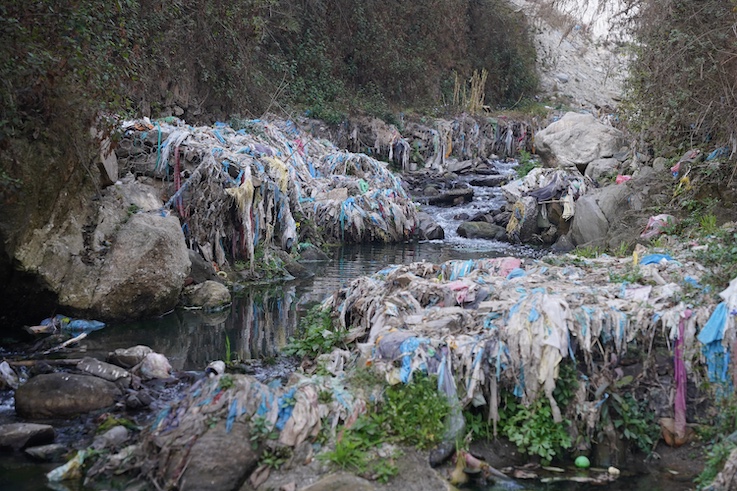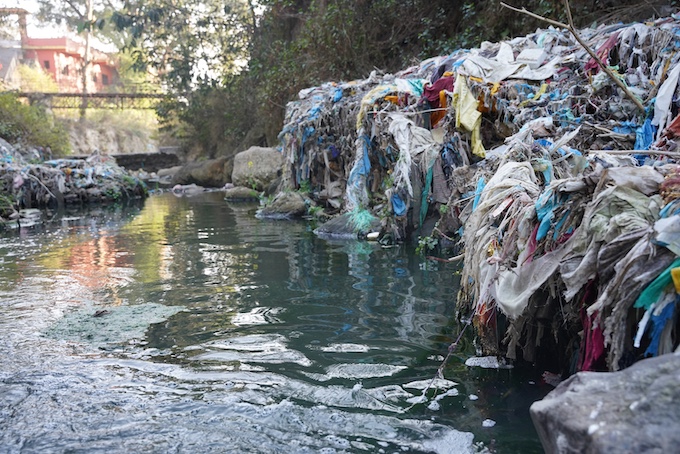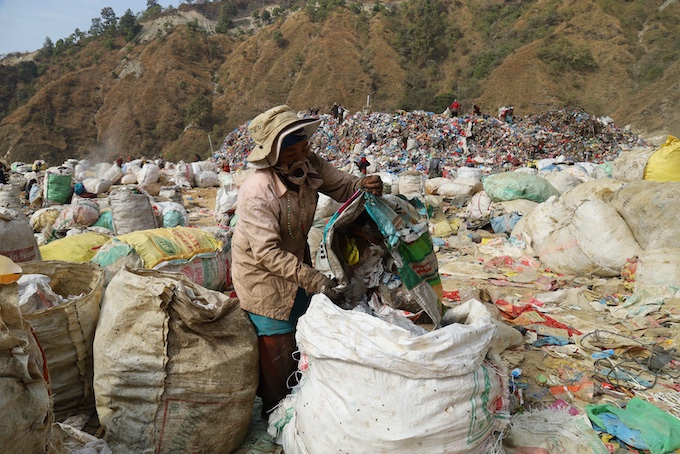Fast Fashion’s Hidden Casualties: New Report Reveals Textile Waste Crisis in Nepal

19-06-2025
A shocking new report by Eco-Age, authored by journalist Tansy Hoskins and investigative reporter Arun Karki, reveals that the textile waste crisis—long known to plague Ghana—is also devastating Nepal. Drawing from extensive on-the-ground research, the investigation uncovers how Nepal’s once-pristine rivers and farmlands are being transformed into dumping grounds for the global fashion industry’s waste.
This follows equally distressing findings from Unearthed and Greenpeace Africa, where mountains of discarded garments—branded by high-street fashion giants like Zara, H&M, and M&S—litter Ghana’s beaches, wetlands, and canals. There, synthetic fabrics are routinely burned by workers to manage the overwhelming waste, releasing hazardous chemicals and carcinogens into the environment.
The Nepal report paints a similarly grim picture.

Rivers of Waste
Nepal, a nation of over 6,000 rivers, once relied on these waterways for drinking water, agriculture, and religious rituals. But the Eco-Age investigation reveals that rivers like the Bagmati and its tributary, Dhobi Khola, are now visibly choked with shredded, brightly coloured clothing. Riverbanks are piled high with textile waste—an environmental disaster unfolding in plain sight.
Despite a national ban on importing second-hand clothing, Nepal is inundated with low-cost, fast fashion items from neighbouring manufacturing giants, China and India. These cheaply made garments are quickly discarded, exacerbating an already unsustainable waste stream.

Toxic Landfills and Cultural Complexities
At the Banchare Danda landfill site—intended as a modern waste management solution—textile dumping continues largely unchecked. This landfill now contributes to the staggering 92 million tonnes of global textile waste produced annually. Formerly fertile farmland is being overwhelmed, with devastating effects on local ecosystems and communities.
Religious customs are also entangled in the crisis. In traditional Nepali funeral practices, loved ones often discard the deceased’s clothes—sometimes including bed sheets and blankets—into rivers as a sign of respect. While deeply meaningful, this tradition has inadvertently added to the textile pollution crisis, highlighting the complex intersection between culture and environmental protection.

Seeds of Hope in Second-Hand
Yet, amid the bleak findings, the report identifies a glimmer of hope. A growing thrift culture among Nepal’s younger generations is beginning to challenge stigmas around wearing second-hand clothing, particularly items that may have belonged to the deceased. This shift, though still in its infancy, signals a potential pathway toward sustainable change—one that blends respect for tradition with urgent environmental needs.
The Global Responsibility
These revelations underscore a critical truth: this is not just Nepal’s or Ghana’s problem. It is the byproduct of a global fast fashion industry that generates profits at the expense of the environment and vulnerable communities. Personal shopping choices—while important—are not enough to address the scale of this issue.
What’s urgently needed is systemic change. Campaigners are now calling for a Global Plastics Treaty that would mandate governments to cut plastic production and hold fashion companies accountable for the lifecycle of their products. With synthetic fabrics like polyester dominating clothing production, reducing plastic use is essential to stemming the tide of textile waste.
Following the landmark victory of the Global Ocean Treaty in 2023, campaigners believe another international agreement is within reach.
As investigative journalist Tansy Hoskins puts it, “The fashion industry thrives on invisibility—hiding its waste, its labour abuses, and its pollution. But in Nepal, the damage is no longer hidden. It’s flowing through sacred rivers and rising from burning landfills.”
The full investigation is available at www.eco-age.com
For more insights on fast fashion’s global impact and what we can do about it, follow continuing coverage from Eco-Age, Greenpeace, and the Centre for Investigative Journalism.
Images courtesy of Eco-Age.























